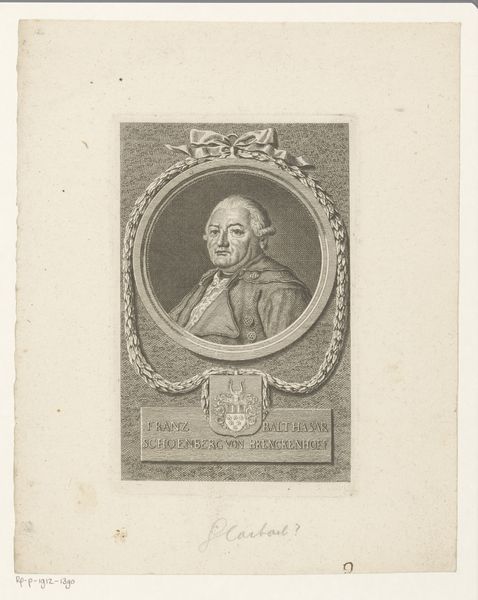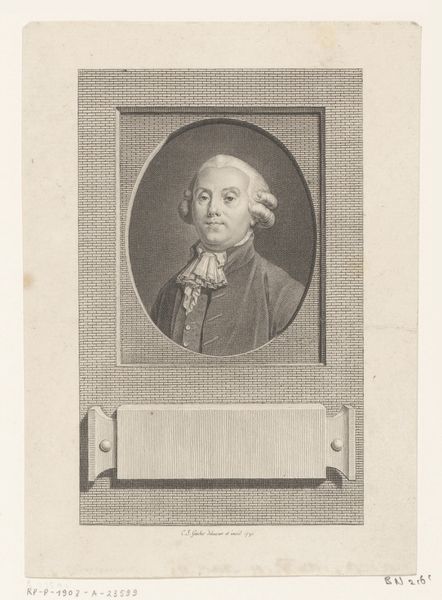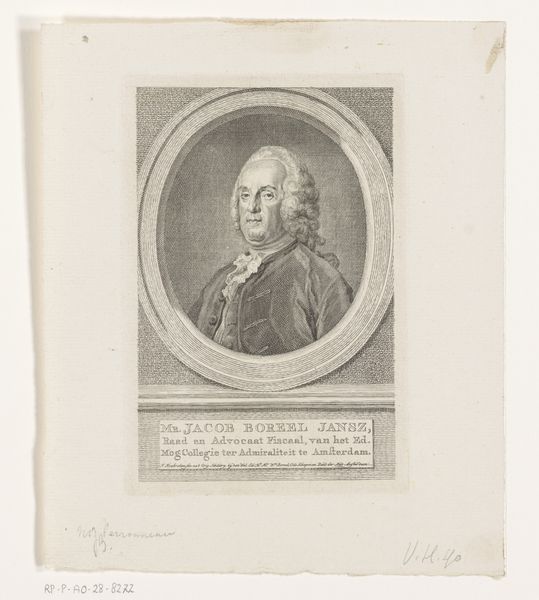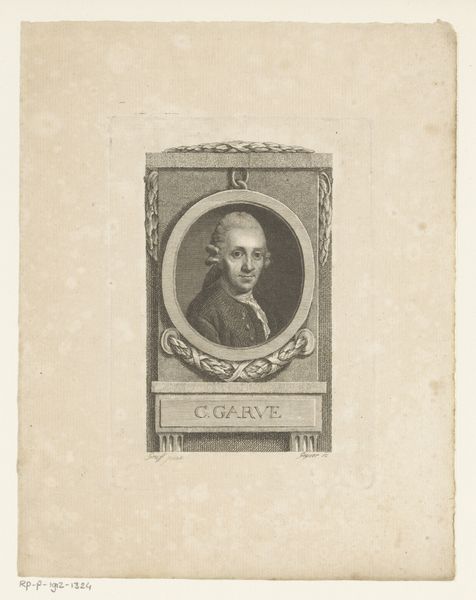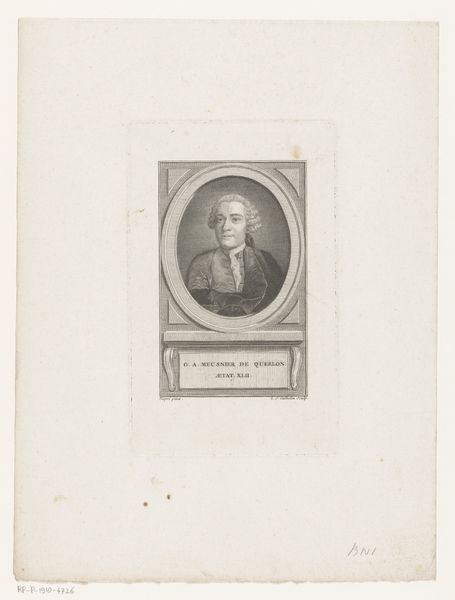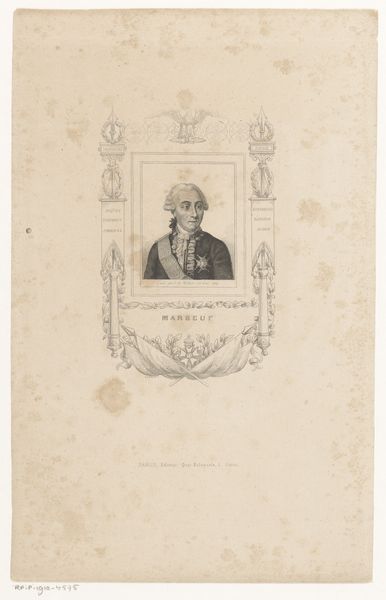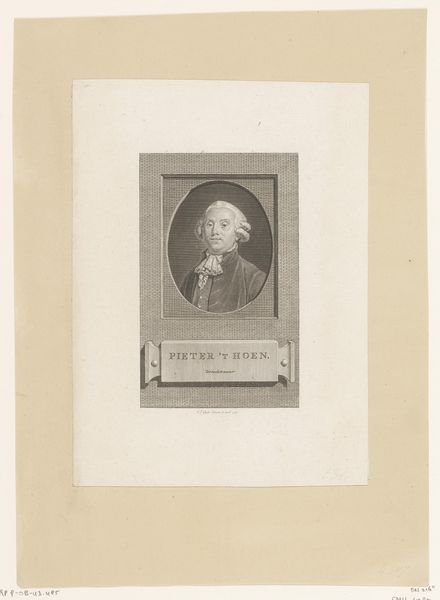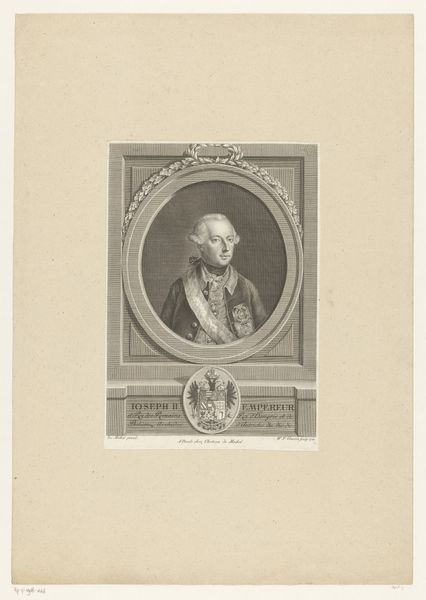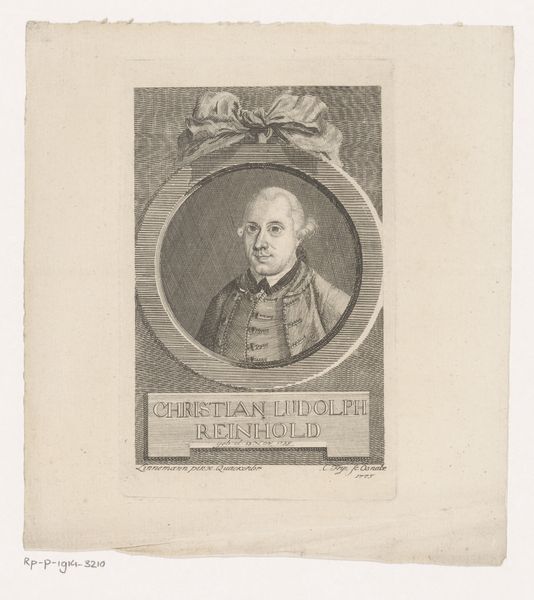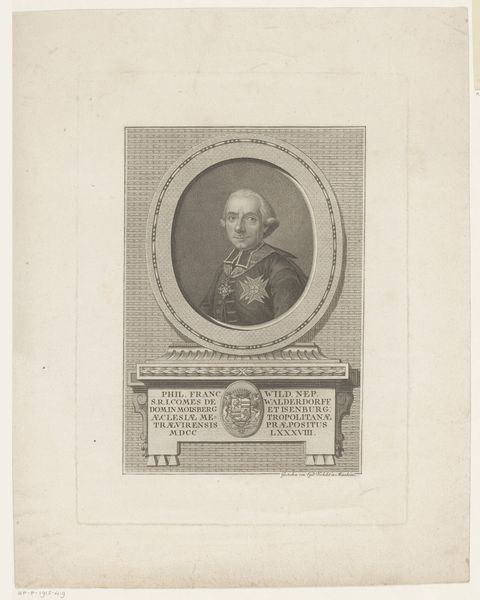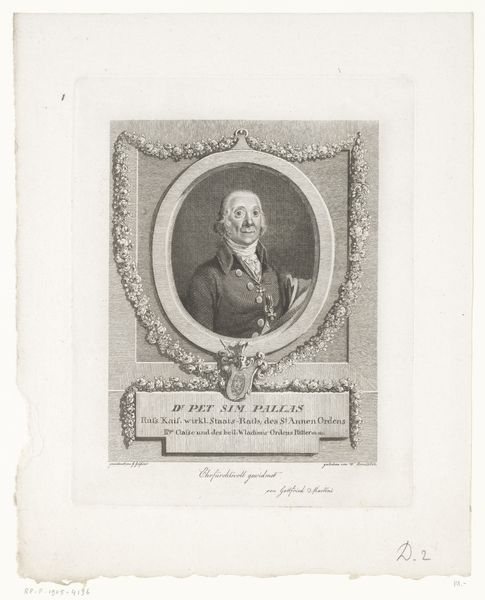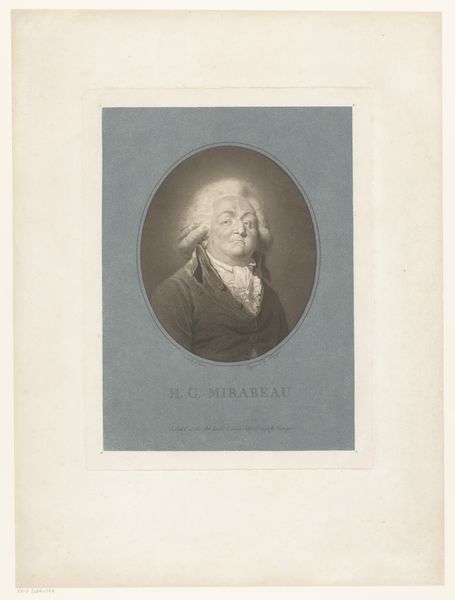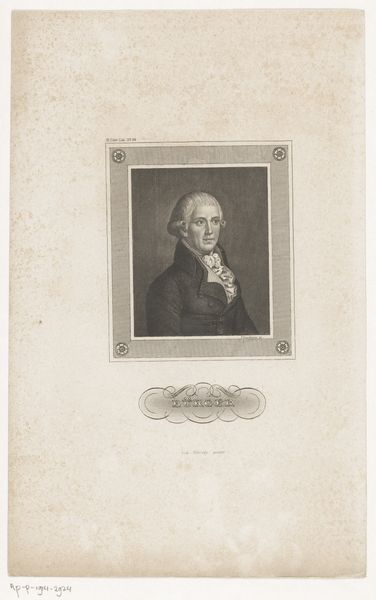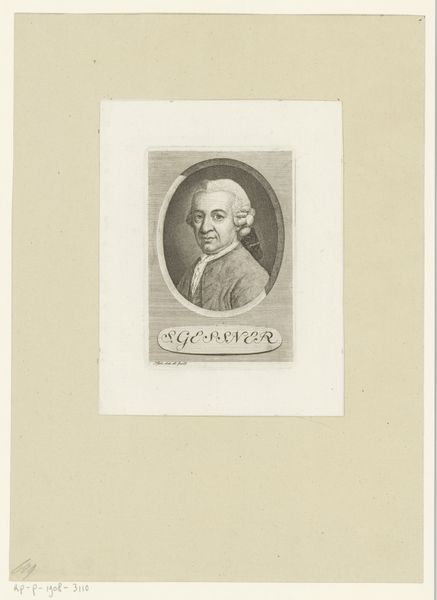
drawing, engraving
#
portrait
#
drawing
#
neoclacissism
#
engraving
Dimensions: height 278 mm, width 200 mm
Copyright: Rijks Museum: Open Domain
Johann Friedrich Bause captured Ernst Platner, immortalizing him in ink through engraving. The laurel wreath, elegantly encircling Platner's visage, speaks of honor, victory, and eternal life—motifs extending far back to ancient Greece, where they crowned athletes and heroes. This symbol, deeply rooted in classical antiquity, reappears throughout history, adorning Roman emperors and Renaissance poets alike, each time echoing aspirations of glory and intellectual prowess. Consider the psychological weight of such imagery. The conscious desire to align oneself with admired ideals, and the subconscious yearnings for recognition, shape how these symbols are both deployed and perceived. The laurel's evolution reveals our enduring human drive for acclaim. Thus, the laurel wreath around Platner is not merely a decorative element but a potent symbol resonating through time, embodying our cyclical pursuit of excellence.
Comments
No comments
Be the first to comment and join the conversation on the ultimate creative platform.
